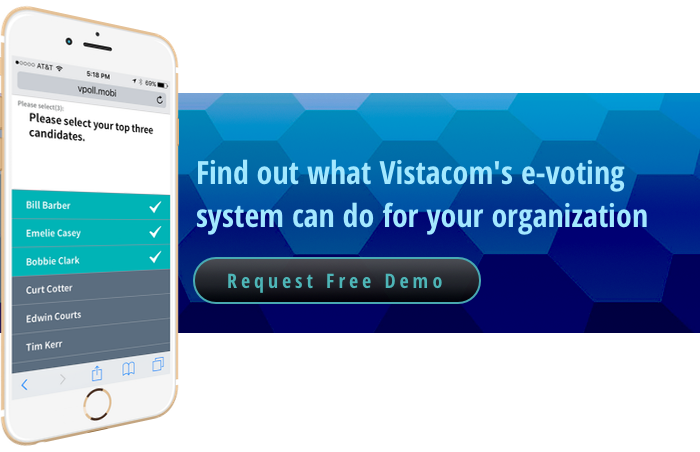Members are the lifeblood of every association, membership body and society. Using new technologies, membership organizations are prioritizing member engagement and election participation, and preventing membership retention decline. In a bid to increase board transparency, drive member engagement, and demonstrate member value, electronic voting systems are being used to boost voting and elections participation.
Here’s how.
Challenge #1 Meeting Quorum
For an association with a large national or international member base, meeting quorum can be a challenge. Live electronic voting systems alleviate this challenge by enabling members to remotely engage in the voting process using a computer, mobile or tablet device. With real time data tracking, election committees can monitor ballot participation in real time in order to ensure quorum has been met.
Challenge #2 Tabulating Election Results
Vote counting can be a stressful, time consuming process for associations whose organizational bylaws require complex ballot weighting. All too often election committees count a ballot, then immediately recount the ballot to get a different result. Electronic live voting systems eliminate this risk by calculating ballot results as each vote comes in.
Challenge #3 Authenticating Voters
Verifying voter eligibility is critical to ensuring an honest election. Electronic voting systems authenticate the eligibility of voters in real time, ensuring there are no duplicate votes or submissions from ineligible members.
For a high profile election, an association may choose to have their electronic voting system verified by a third party election process monitoring agency. Recently faced with its first contested election of twenty years, the U.S. Soccer Federation hired a third party monitoring agency to ensure the accuracy of Vistacom’s real-time ballot counting and vote weighting algorithms.
Challenge #4 Opinion polling
In certain situations, member opinion on a set of voting choices is more insightful than a simple ballot being cast. By incorporating open response fields into early voting rounds, an association can collect more rich data on the demands or interests of its members. This data can then be used to refine later policy recommendations.
When preparing for a board vote, for instance, a professional association can bring a vote to its member base that includes an opinion response section. Its members will feel more valued, as a result, and confident in the ability of their board to make the right call. This is especially advantageous when preparing for a vote on a sensitive policy or bylaw.
Final Words
Professional associations and nonprofits increasingly are using live electronic voting systems to improve the efficiency, transparency and value of their elections and member voting process. Schedule a free demo of Vistacom’s electronic voting system today.

